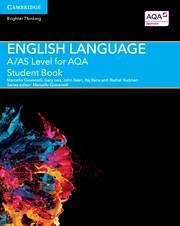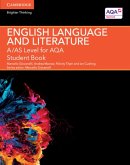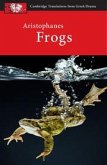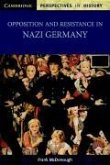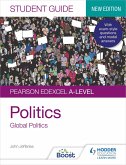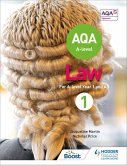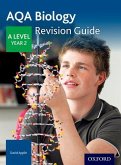Marcello Giovanelli, Gary Ives, John Keen
A/As Level English Language for Aqa Student Book
Herausgeber: Giovanelli, Marcello
Marcello Giovanelli, Gary Ives, John Keen
A/As Level English Language for Aqa Student Book
Herausgeber: Giovanelli, Marcello
- Broschiertes Buch
- Merkliste
- Auf die Merkliste
- Bewerten Bewerten
- Teilen
- Produkt teilen
- Produkterinnerung
- Produkterinnerung
A new series of bespoke, full-coverage resources developed for the 2015 A Level English qualifications.
Andere Kunden interessierten sich auch für
![A/As Level English Language and Literature for Aqa Student Book A/As Level English Language and Literature for Aqa Student Book]() Marcello GiovanelliA/As Level English Language and Literature for Aqa Student Book47,99 €
Marcello GiovanelliA/As Level English Language and Literature for Aqa Student Book47,99 €![A/As Level Computer Science for Wjec/Eduqas Student Book A/As Level Computer Science for Wjec/Eduqas Student Book]() Mark ThomasA/As Level Computer Science for Wjec/Eduqas Student Book58,99 €
Mark ThomasA/As Level Computer Science for Wjec/Eduqas Student Book58,99 €![Aristophanes: Frogs Aristophanes: Frogs]() Judith Affleck (Stratford-Upon-Avon King Edward VI School)Aristophanes: Frogs20,99 €
Judith Affleck (Stratford-Upon-Avon King Edward VI School)Aristophanes: Frogs20,99 €![Opposition and Resistance in Nazi Germany Opposition and Resistance in Nazi Germany]() Frank McDonough (Liverpool John Moores University)Opposition and Resistance in Nazi Germany22,99 €
Frank McDonough (Liverpool John Moores University)Opposition and Resistance in Nazi Germany22,99 €![Pearson Edexcel A-level Politics Student Guide 4: Global Politics Pearson Edexcel A-level Politics Student Guide 4: Global Politics]() Jefferies, John, MD, MPH, FAAP, FACCPearson Edexcel A-level Politics Student Guide 4: Global Politics10,99 €
Jefferies, John, MD, MPH, FAAP, FACCPearson Edexcel A-level Politics Student Guide 4: Global Politics10,99 €![AQA A-level Law for Year 1/AS AQA A-level Law for Year 1/AS]() Jacqueline MartinAQA A-level Law for Year 1/AS33,99 €
Jacqueline MartinAQA A-level Law for Year 1/AS33,99 €![AQA A Level Biology Year 2 Revision Guide AQA A Level Biology Year 2 Revision Guide]() David ApplinAQA A Level Biology Year 2 Revision Guide15,99 €
David ApplinAQA A Level Biology Year 2 Revision Guide15,99 €-
-
-
A new series of bespoke, full-coverage resources developed for the 2015 A Level English qualifications.
Hinweis: Dieser Artikel kann nur an eine deutsche Lieferadresse ausgeliefert werden.
Hinweis: Dieser Artikel kann nur an eine deutsche Lieferadresse ausgeliefert werden.
Produktdetails
- Produktdetails
- A Level (AS) English Language AQA
- Verlag: Cambridge University Press
- Seitenzahl: 320
- Erscheinungstermin: 4. Juni 2015
- Englisch
- Abmessung: 276mm x 219mm x 17mm
- Gewicht: 714g
- ISBN-13: 9781107465626
- ISBN-10: 1107465621
- Artikelnr.: 41852763
- Herstellerkennzeichnung
- Libri GmbH
- Europaallee 1
- 36244 Bad Hersfeld
- gpsr@libri.de
- A Level (AS) English Language AQA
- Verlag: Cambridge University Press
- Seitenzahl: 320
- Erscheinungstermin: 4. Juni 2015
- Englisch
- Abmessung: 276mm x 219mm x 17mm
- Gewicht: 714g
- ISBN-13: 9781107465626
- ISBN-10: 1107465621
- Artikelnr.: 41852763
- Herstellerkennzeichnung
- Libri GmbH
- Europaallee 1
- 36244 Bad Hersfeld
- gpsr@libri.de
Introduction
BEGINNING: 1. What does language study mean at A Level?
2. Text producers and receivers
3. Mode and genre
4. Language use and language users
5. Language level 1: Lexis and semantics
6. Language level 2: Grammar
7. Language level 3: Phonetics, phonology and prosodics
8. Language level 4: Graphology
9. Language level 5: Pragmatics
10. Language level 6: Discourse
11. Introduction to analysing texts
12. Becoming a language investigator
DEVELOPING: 13. Textual variations and representations
13.1 Textual variations
13.2 Language analysis: methods and approaches
13.3 Language analysis: genre and mode
13.4 Language analysis: audience and purpose
13.5 Introduction to representations
13.6 Language and representations: people, social groups and gender
13.7 Language and representations: events, places and issues
13.8 Exploring similarities and differences between texts
13.9 Bringing it all together
14. Child language development
14.1 Learning to talk
14.1.1 The process of spoken acquisition
14.1.2 A historical overview of acquisition theory
14.1.3 Environmental factors
14.1.4 Pragmatics
14.1.5 Discourse
14.1.6 Lexis and semantics
14.1.7 Grammar
14.2 Learning to write
14.2.1 Early exposure to printed language
14.2.2 Learning to read
14.2.3 The process of writing development
14.2.4 Attitudes and theories about learning to write
14.2.5 Environmental factors
14.2.6 Handwriting and orthography
14.2.7 Lexical and grammatical development
14.3 Bringing it all together
15. Language diversity
15.1 Varieties and diversity - an overview
15.2 Geographical varieties of English
15.3 Grammatical variations
15.4 Phonological variations: our accent
15.5 Personal and social varieties of English
15.6 Bringing it all together
16. Language change
16.1 Studying language change
16.2 The origins of English
16.3 Lexical change
16.4 Semantic change
16.5 Orthography
16.6 Grammatical change
16.7 Standardisation
16.8 Why does change happen?
16.9 How does change spread?
16.10 Bringing it all together
17. Language in action: a language investigation
17.1 What is a language investigation?
17.2 Choosing an area to investigate
17.3 What approach could you take?
17.4 Data collection
17.5 Data selection
17.6 Writing your investigation
17.7 Bringing it all together
18. Original writing
18.1 The writing process
18.2 The style model
18.3 The power of persuasion
18.4 The power of storytelling
18.5 The power of information
18.6 The drafting process
18.7 Writing a commentary
18.8 Referencing your work
18.9 Bringing it all together
ENRICHING: 19 Textual variations and representations
20 Language development
21 Language diversity
22 Language change
23 Language investigation
24 Original writing
References
Index
Acknowledgements
BEGINNING: 1. What does language study mean at A Level?
2. Text producers and receivers
3. Mode and genre
4. Language use and language users
5. Language level 1: Lexis and semantics
6. Language level 2: Grammar
7. Language level 3: Phonetics, phonology and prosodics
8. Language level 4: Graphology
9. Language level 5: Pragmatics
10. Language level 6: Discourse
11. Introduction to analysing texts
12. Becoming a language investigator
DEVELOPING: 13. Textual variations and representations
13.1 Textual variations
13.2 Language analysis: methods and approaches
13.3 Language analysis: genre and mode
13.4 Language analysis: audience and purpose
13.5 Introduction to representations
13.6 Language and representations: people, social groups and gender
13.7 Language and representations: events, places and issues
13.8 Exploring similarities and differences between texts
13.9 Bringing it all together
14. Child language development
14.1 Learning to talk
14.1.1 The process of spoken acquisition
14.1.2 A historical overview of acquisition theory
14.1.3 Environmental factors
14.1.4 Pragmatics
14.1.5 Discourse
14.1.6 Lexis and semantics
14.1.7 Grammar
14.2 Learning to write
14.2.1 Early exposure to printed language
14.2.2 Learning to read
14.2.3 The process of writing development
14.2.4 Attitudes and theories about learning to write
14.2.5 Environmental factors
14.2.6 Handwriting and orthography
14.2.7 Lexical and grammatical development
14.3 Bringing it all together
15. Language diversity
15.1 Varieties and diversity - an overview
15.2 Geographical varieties of English
15.3 Grammatical variations
15.4 Phonological variations: our accent
15.5 Personal and social varieties of English
15.6 Bringing it all together
16. Language change
16.1 Studying language change
16.2 The origins of English
16.3 Lexical change
16.4 Semantic change
16.5 Orthography
16.6 Grammatical change
16.7 Standardisation
16.8 Why does change happen?
16.9 How does change spread?
16.10 Bringing it all together
17. Language in action: a language investigation
17.1 What is a language investigation?
17.2 Choosing an area to investigate
17.3 What approach could you take?
17.4 Data collection
17.5 Data selection
17.6 Writing your investigation
17.7 Bringing it all together
18. Original writing
18.1 The writing process
18.2 The style model
18.3 The power of persuasion
18.4 The power of storytelling
18.5 The power of information
18.6 The drafting process
18.7 Writing a commentary
18.8 Referencing your work
18.9 Bringing it all together
ENRICHING: 19 Textual variations and representations
20 Language development
21 Language diversity
22 Language change
23 Language investigation
24 Original writing
References
Index
Acknowledgements
Introduction
BEGINNING: 1. What does language study mean at A Level?
2. Text producers and receivers
3. Mode and genre
4. Language use and language users
5. Language level 1: Lexis and semantics
6. Language level 2: Grammar
7. Language level 3: Phonetics, phonology and prosodics
8. Language level 4: Graphology
9. Language level 5: Pragmatics
10. Language level 6: Discourse
11. Introduction to analysing texts
12. Becoming a language investigator
DEVELOPING: 13. Textual variations and representations
13.1 Textual variations
13.2 Language analysis: methods and approaches
13.3 Language analysis: genre and mode
13.4 Language analysis: audience and purpose
13.5 Introduction to representations
13.6 Language and representations: people, social groups and gender
13.7 Language and representations: events, places and issues
13.8 Exploring similarities and differences between texts
13.9 Bringing it all together
14. Child language development
14.1 Learning to talk
14.1.1 The process of spoken acquisition
14.1.2 A historical overview of acquisition theory
14.1.3 Environmental factors
14.1.4 Pragmatics
14.1.5 Discourse
14.1.6 Lexis and semantics
14.1.7 Grammar
14.2 Learning to write
14.2.1 Early exposure to printed language
14.2.2 Learning to read
14.2.3 The process of writing development
14.2.4 Attitudes and theories about learning to write
14.2.5 Environmental factors
14.2.6 Handwriting and orthography
14.2.7 Lexical and grammatical development
14.3 Bringing it all together
15. Language diversity
15.1 Varieties and diversity - an overview
15.2 Geographical varieties of English
15.3 Grammatical variations
15.4 Phonological variations: our accent
15.5 Personal and social varieties of English
15.6 Bringing it all together
16. Language change
16.1 Studying language change
16.2 The origins of English
16.3 Lexical change
16.4 Semantic change
16.5 Orthography
16.6 Grammatical change
16.7 Standardisation
16.8 Why does change happen?
16.9 How does change spread?
16.10 Bringing it all together
17. Language in action: a language investigation
17.1 What is a language investigation?
17.2 Choosing an area to investigate
17.3 What approach could you take?
17.4 Data collection
17.5 Data selection
17.6 Writing your investigation
17.7 Bringing it all together
18. Original writing
18.1 The writing process
18.2 The style model
18.3 The power of persuasion
18.4 The power of storytelling
18.5 The power of information
18.6 The drafting process
18.7 Writing a commentary
18.8 Referencing your work
18.9 Bringing it all together
ENRICHING: 19 Textual variations and representations
20 Language development
21 Language diversity
22 Language change
23 Language investigation
24 Original writing
References
Index
Acknowledgements
BEGINNING: 1. What does language study mean at A Level?
2. Text producers and receivers
3. Mode and genre
4. Language use and language users
5. Language level 1: Lexis and semantics
6. Language level 2: Grammar
7. Language level 3: Phonetics, phonology and prosodics
8. Language level 4: Graphology
9. Language level 5: Pragmatics
10. Language level 6: Discourse
11. Introduction to analysing texts
12. Becoming a language investigator
DEVELOPING: 13. Textual variations and representations
13.1 Textual variations
13.2 Language analysis: methods and approaches
13.3 Language analysis: genre and mode
13.4 Language analysis: audience and purpose
13.5 Introduction to representations
13.6 Language and representations: people, social groups and gender
13.7 Language and representations: events, places and issues
13.8 Exploring similarities and differences between texts
13.9 Bringing it all together
14. Child language development
14.1 Learning to talk
14.1.1 The process of spoken acquisition
14.1.2 A historical overview of acquisition theory
14.1.3 Environmental factors
14.1.4 Pragmatics
14.1.5 Discourse
14.1.6 Lexis and semantics
14.1.7 Grammar
14.2 Learning to write
14.2.1 Early exposure to printed language
14.2.2 Learning to read
14.2.3 The process of writing development
14.2.4 Attitudes and theories about learning to write
14.2.5 Environmental factors
14.2.6 Handwriting and orthography
14.2.7 Lexical and grammatical development
14.3 Bringing it all together
15. Language diversity
15.1 Varieties and diversity - an overview
15.2 Geographical varieties of English
15.3 Grammatical variations
15.4 Phonological variations: our accent
15.5 Personal and social varieties of English
15.6 Bringing it all together
16. Language change
16.1 Studying language change
16.2 The origins of English
16.3 Lexical change
16.4 Semantic change
16.5 Orthography
16.6 Grammatical change
16.7 Standardisation
16.8 Why does change happen?
16.9 How does change spread?
16.10 Bringing it all together
17. Language in action: a language investigation
17.1 What is a language investigation?
17.2 Choosing an area to investigate
17.3 What approach could you take?
17.4 Data collection
17.5 Data selection
17.6 Writing your investigation
17.7 Bringing it all together
18. Original writing
18.1 The writing process
18.2 The style model
18.3 The power of persuasion
18.4 The power of storytelling
18.5 The power of information
18.6 The drafting process
18.7 Writing a commentary
18.8 Referencing your work
18.9 Bringing it all together
ENRICHING: 19 Textual variations and representations
20 Language development
21 Language diversity
22 Language change
23 Language investigation
24 Original writing
References
Index
Acknowledgements

